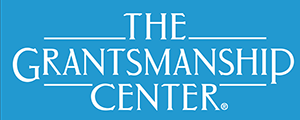Nonprofits know they need plans. Like any other organization, they have goals and objectives, work to do, resources to gather and manage. This doesn’t happen in a vacuum or on the spur of the moment. It happens as the result of a planning process—deciding where you want to be at some date in the future, and how you want to get there.
Blog
The Problem Statement
They say be sure you’re asking the right questions before you start to spell out your answers. “They” must have been thinking about a persuasive proposal. It’s important to frame the problem, the challenge or the opportunity first, and then go about telling how you’ll address it.
Institutional Memory – Lest We Forget
Your nonprofit has a history of funding from a variety of foundations, a few local businesses, maybe a special-purpose state grant. Congratulations. Now a new person takes the proposal writer’s chair, it’s time for reports and renewals, so the newbie asks the basic questions: “Did we get a grant from the XYZ Foundation? How much? When? Who did we work with over there?”
DUNS Bites the Dust
If your organization applies for Federal funding, you’ve gotten to know the commercial data firm Dun & Bradstreet—more specifically its unique numeric identifier called the DUNS number. Your organization probably has (or had) a DUNS number, along with 300 million others, so the Feds could tell exactly which agency or organization you are.
The Case for Evidence-Based Methods
The need for the program has been established. The organization is credible and the budget is concrete. Now we lay out the methods section. Why are we doing our work this way? Well, that’s how we’ve always done it, it’s our traditional approach.
Opening the Doors to Family Foundations
Family foundations—relatively small, usually without paid staff and often supporting only local causes—comprise the largest section of the private foundation world. Though their grants are seldom large, support from family foundations can be extremely rewarding:
Some Advice about Credibility
One of the most important elements in a persuasive proposal is the “qualifications and credentials” of the organization and its people who will actually carry out the work. It’s also one of the easiest to get wrong, or just wrong enough to derail the application. These are some of the mistakes nonprofits have made and some ways to avoid them.
7 steps to warding off the (mission) creep
The scenario may go like this: A funding source issues an announcement soliciting grant proposals. The focus of the funding source may be only marginally related to the organization's mission. Despite this, the lure of money becomes irresistible.
A Half-Century of the Five Percent Rule
In the philanthropic Dark Ages (before 1969) there was no rule that said foundations had to make any grants with their money. Congress more or less closed that loophole with the Tax Reform Act of ’69. There were complications and ambiguities, but in 1976 the “five percent payout requirement” was set in stone. It’s been the default standard for grant-making foundations ever since.
It’s About More Than Money
Writing proposals and winning grants are important elements in the ecosystem of philanthropy. It’s easy to see the world through that lens – find the money, ask for the money, get and spend the money, rinse and repeat – but it might be helpful to think about the process in a different, more holistic way.












